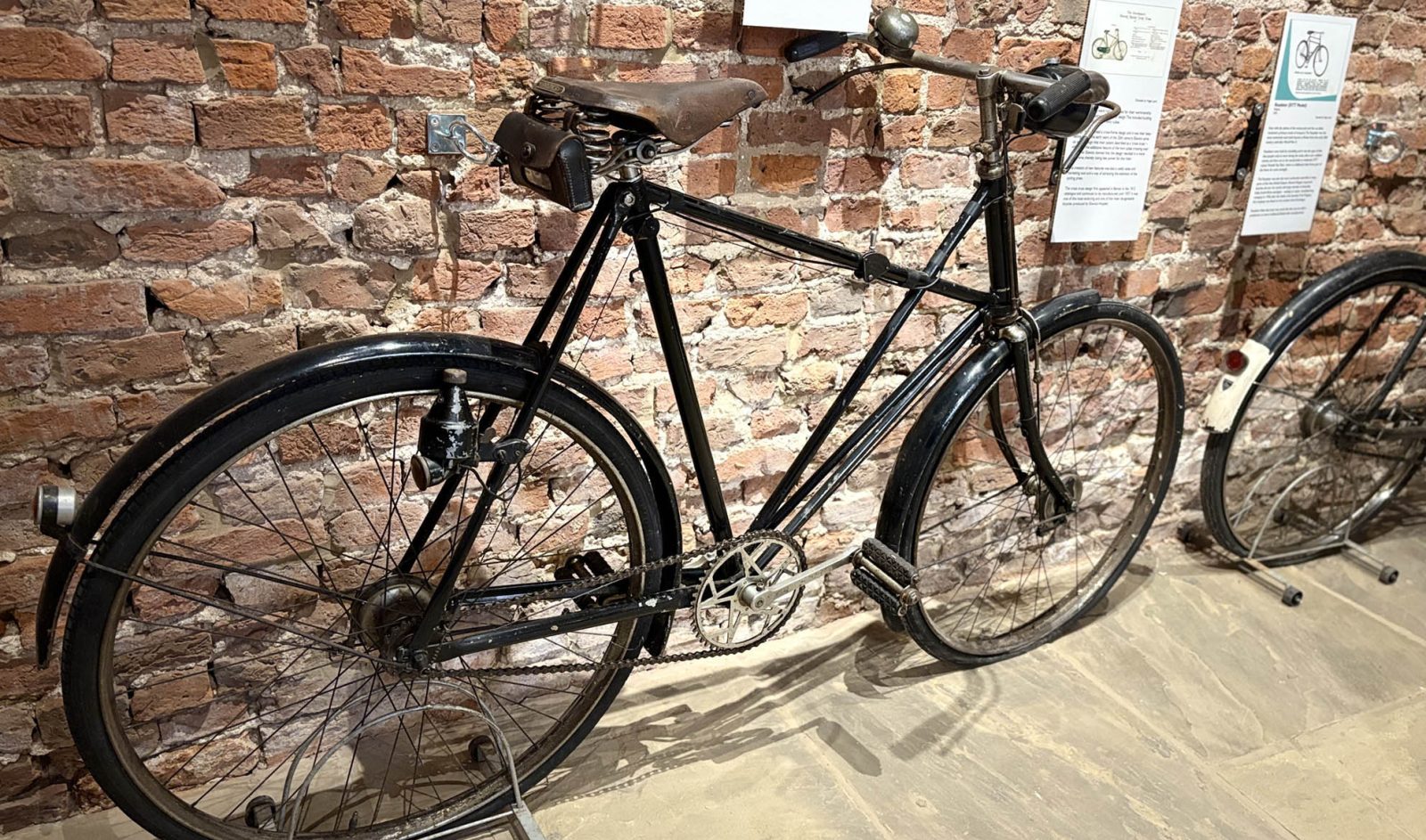
Elswick-Hopper was a cycle manufacturing company based in Barton-upon-Humber from the late 19th century to the latter part of the 20th century. Its founder, Fred Hopper, was born in Barton in 1859. He made his first bicycle in 1890 and was soon manufacturing both bicycles and motorcycles.
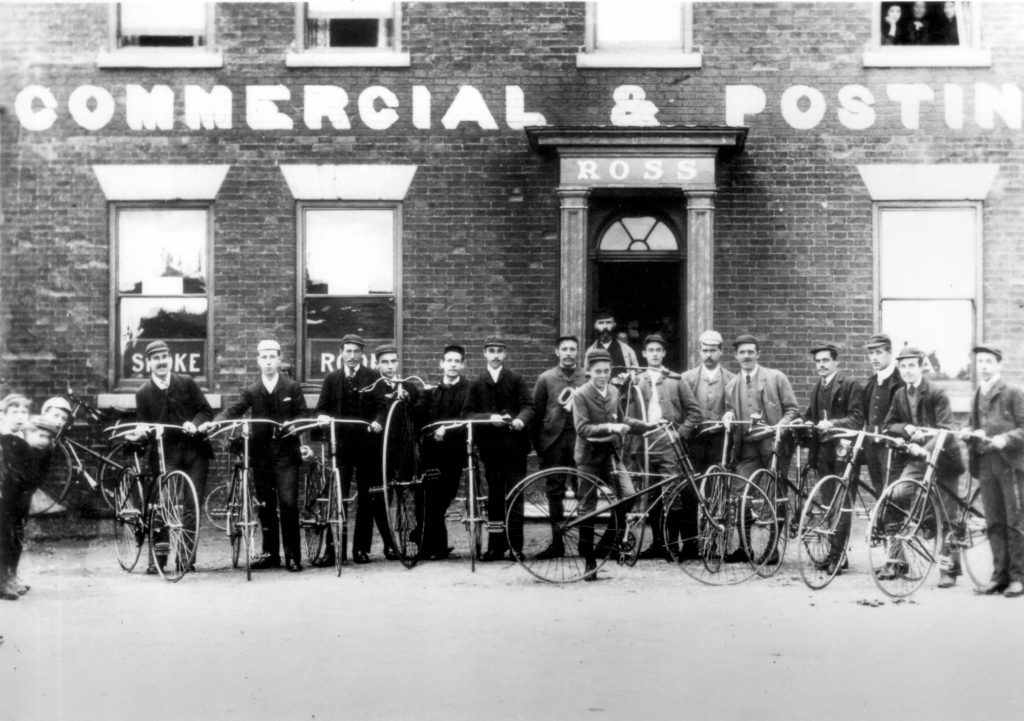
Hopper’s company acquired the Elswick Cycle Company in 1913 and became Elswick-Hopper – though bikes continued to be sold under the separate names of Elswick and Hopper. From their base in Barton, they became a major bike manufacturer and exported bicycles all over the world. The bikes in this exhibition span a period from the 1890s to the 1980s and illustrate how Elswick-Hopper and its bicycles were innovative and inventive, adapting to social change in Britain and beyond. They reflect some of the transformations in working lives, in the role of women, children and family life, in transport, leisure, advertising and popular culture, and in the standing of Britain in the world.
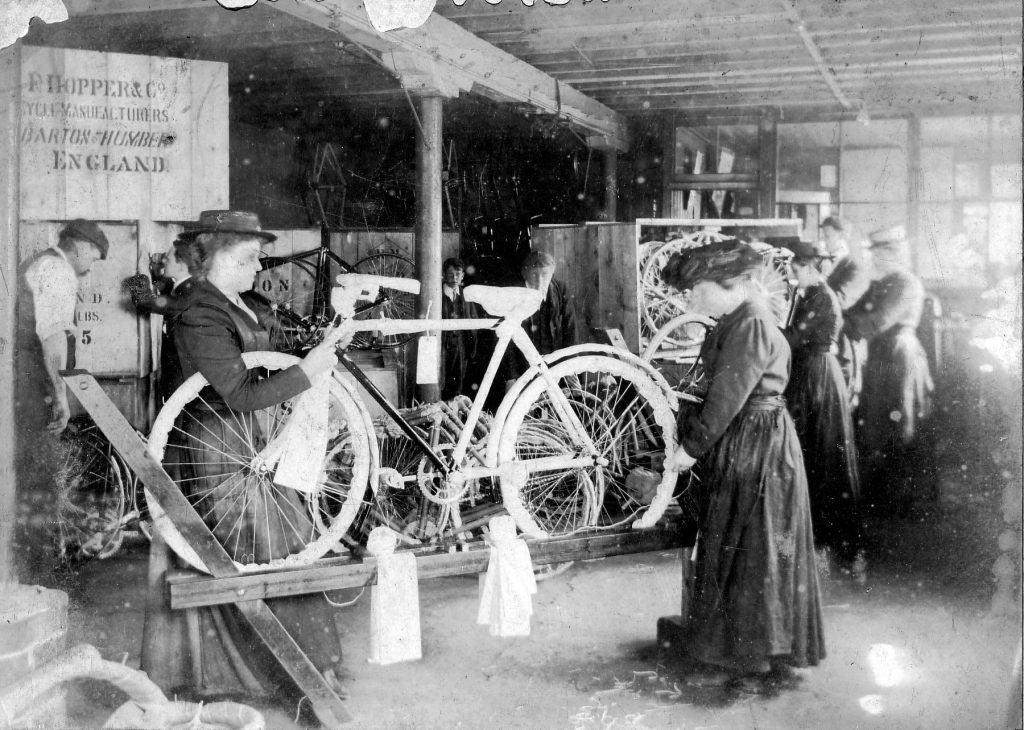
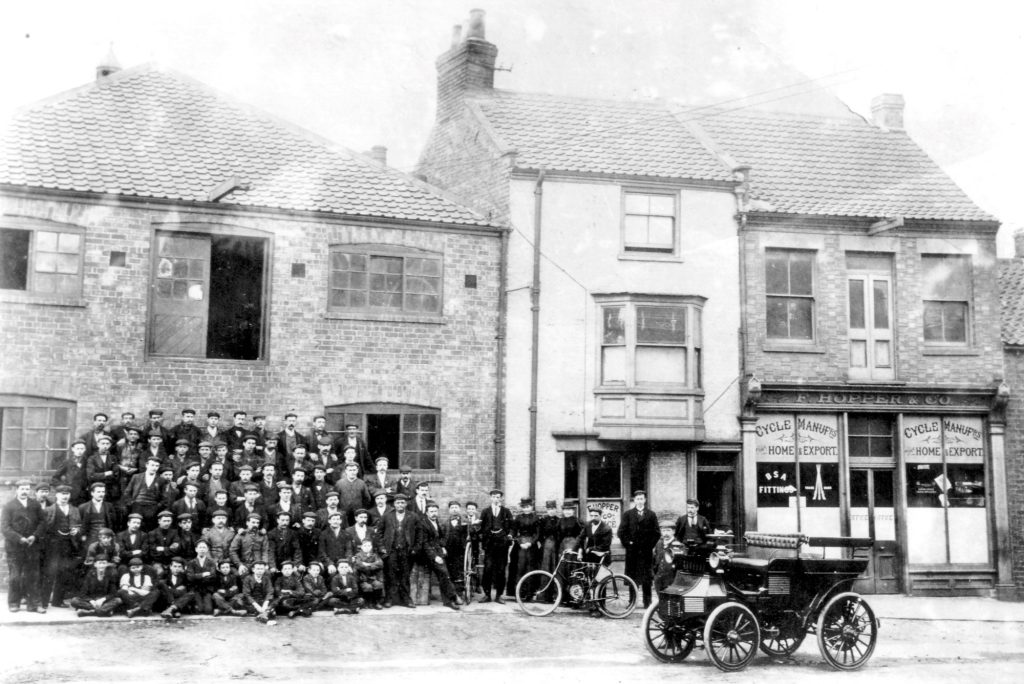
At the height of its success, Elswick-Hopper employed 800 workers in Barton – almost one in eight of the town’s total population at that time – and some of the company’s manufacturing and office buildings, along with workers’ housing, can still be seen today. The story of Elswick-Hopper is the story of a great British bike manufacturer and a story of the town of Barton.
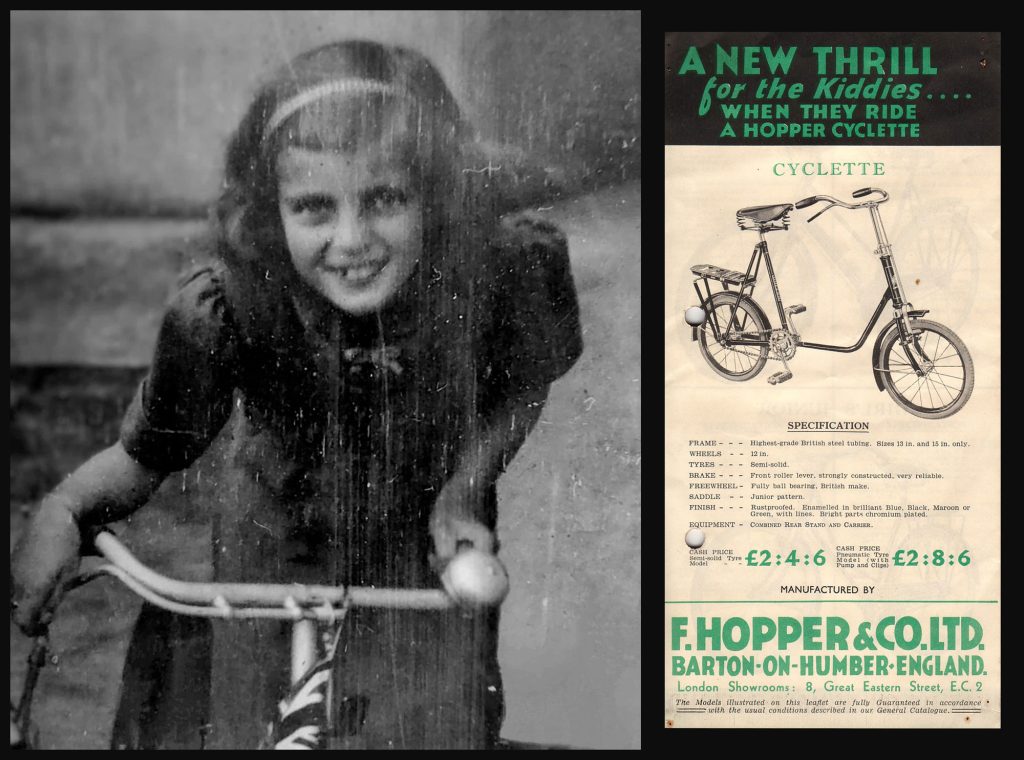
1936/7. Donated by Nick Redman
Bikes offered a new kind of play and independence for children and young people. Bikes gave them access to a means of transport that was not reliant on adults, which allowed them the freedom to explore their environment more widely. Bikes for children also became a way of creating a market and brand loyalty at an early age. The Cyclette was one of several models in production by Hopper in the 1930s, including the ‘Little Giant Junior’ and a Junior Tricycle.
This particular bike belonged to Bristol resident Janet Redman (1935-2022), and you can see a photograph of her on the bike that her family think was taken on VE Day – 8 May 1945. Information about Janet and her bike from her son:
When war broke out in 1939, Bristol was under evening curfew… I understand Mum was given the Hopper in 1940. The section on the rear mudguard was painted with white paint, as it was on car mudguards. This was an attempt to make traffic more visible in the evening – streetlights were banned, and headlights on vehicles were ‘shrouded’ – as children took every opportunity to play outside, even at dusk. Mum used the bike and had fun with it until at least 1946. I expect my Grandfather Fred gave it a lick or two of green paint in the 1940s.
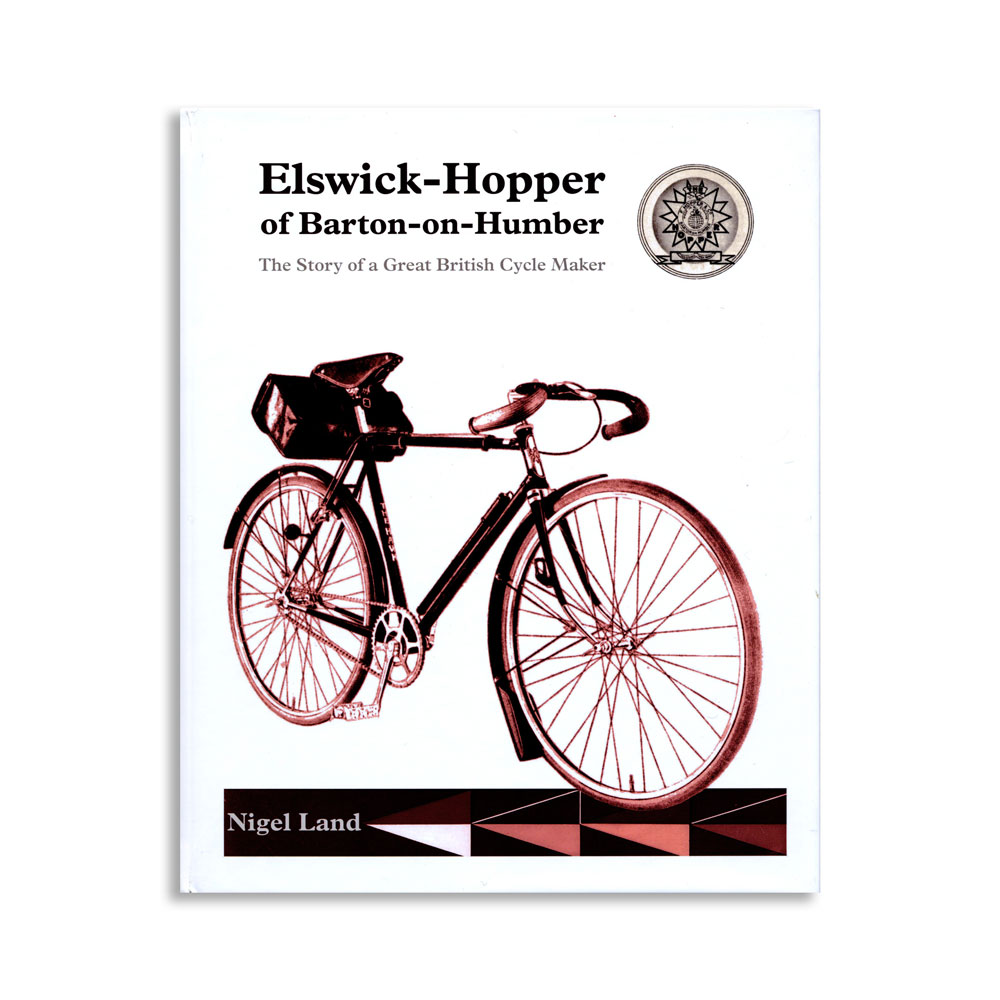
To purchase a copy of Nigel Land’s definitive history of the cycleworks: Elswick-Hopper of Barton on Humber, (hardback £18) please click HERE